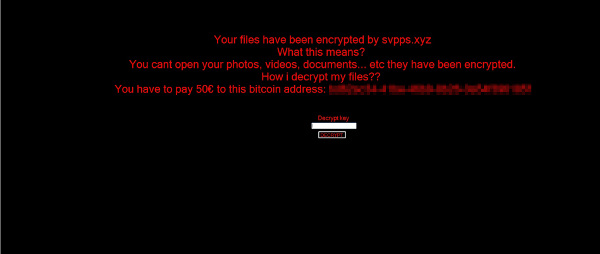RANSOM_XYZWARE.A
Ransom.FileCryptor (Malwarebytes); RDN/Ransom (McAfee)
Windows


Threat Type: Ransomware
Destructiveness: No
Encrypted: No
In the wild: Yes
OVERVIEW
This Ransomware arrives on a system as a file dropped by other malware or as a file downloaded unknowingly by users when visiting malicious sites.
It is capable of encrypting files in the affected system.
It encrypts files with specific file extensions. It encrypts files found in specific folders.
TECHNICAL DETAILS
Arrival Details
This Ransomware arrives on a system as a file dropped by other malware or as a file downloaded unknowingly by users when visiting malicious sites.
Other Details
This Ransomware is capable of encrypting files in the affected system.
It locks the screen and displays the following image:
Ransomware Routine
This Ransomware encrypts files with the following extensions:
- .htlm
- .db
- .exe
- .txt
It encrypts files found in the following folders:
- %User Profile%\My Pictures
- %User Profile%\Desktop
- %User Profile%\Application Data
- %User Profile%\My Music
- %User Profile%\My Documents
(Note: %User Profile% is the current user's profile folder, which is usually C:\Documents and Settings\{user name} on Windows 2000, XP, and Server 2003, or C:\Users\{user name} on Windows Vista and 7.)
NOTES:
The password required is 'xdlsd420' to unlock the screen.
SOLUTION
Step 1
Before doing any scans, Windows XP, Windows Vista, and Windows 7 users must disable System Restore to allow full scanning of their computers.
Step 2
Scan your computer with your Trend Micro product to delete files detected as RANSOM_XYZWARE.A. If the detected files have already been cleaned, deleted, or quarantined by your Trend Micro product, no further step is required. You may opt to simply delete the quarantined files. Please check this Knowledge Base page for more information.
Did this description help? Tell us how we did.


